

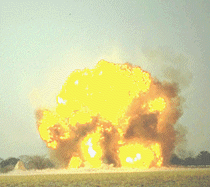
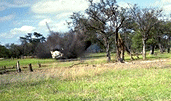
 www.youtube.com/watch?v=-PUfETwB3Bk
www.youtube.com/watch?v=-PUfETwB3Bk




 www.youtube.com/watch?v=-PUfETwB3Bk
www.youtube.com/watch?v=-PUfETwB3Bk
Land Mines
Mines have been with us a long time. The first mines were employed in the American Civil War when Confederate forces linked tripwires to musket trigger mechanisms to fire black powder and shrapnel charges with percussion caps. More like booby traps than today's mines, they were named "land torpedoes", and their use in the war produced protests from the Union government. Rudimentary anti-tank mines were employed by the German Army in World War I. These were based on shells fitted with super-quick fuses, and proved effective against American-crewed, British-built tanks in 1918. However it was not until World War II that effective mines, both anti-tank (AT) and anti-personnel (AP) were developed and used in quantity.
Anti-personnel mines
Blast mines are about the size of a shoe polish tin and contain enough explosive to blow off a man's foot. Among blast mines the most widely used have been the Italian Tecnovar TS-50, which has turned up in three continents, and the widely copied Soviet PMN. These contain respectively 50g and 240g of high explosive (HE) and are designed to disable a man so that he he must be evacuated by two or four other men, and subsequently passed down the casualty evacuation chain. The sight of men with blast injuries to feet, legs and lower abdomen lowers morale and slows the momentum of an advance.
Directional shrapnel mines, such as the U.S. M18A1 Claymore, blast 700 ball bearings across a 60 degree arc at a height of two metres, to an effective range of 50+ meters.
Bounding AP mines, in the shape ofthe S.Mi.35 and S.Mi.44, were developed by the Germans in World War II, and have been the model for all subsequent designs including the Soviet OZM-4 and the Italian Valsella Valmara 69.
Bounding AP mines are triggered either by a tripwire or direct pressure. This fires a container to a height of about a metre above the ground, where it explodes - scattering fragments or ball bearings over 360 degrees, causing casualties out to 50 metres or so. Men close to a directional or bounding mine will suffer multiple wounds, which are likely to be fatal.
Anti-tank mines
AT and AP mines were originally produced in steel, though the Soviet Union experimented with wood, and the Germans used pottery, glass and Bakelite as the external case. This made the mines harder to locate using electronic mine detectors.
The most significant change in mine design came with the use of plastic. This is tough, light, and can be colored to assist camouflage. It will not rust or deteriorate and since modern mines have practically no metal parts, they cannot be detected with electronic mine detectors.
Along with plastic came the electronics revolution. This made it possible to develop AT mine fuses which could discriminate between types of vehicles, trigger a mine remotely, and even switch it off, or "self-sterilise" after a pre-set time. The Swedish Type FFV 028 pioneered this technology - this mine would explode even if a tank straddled it, since its magnetic field operated the fuse, so the mine attacked the full width of the AFV. The shaped charge penetrated the hull and detonated on-board ammunition. A "thinking mine" had entered service.
In World War II, the Germans also produced some of the most effective AT mines. Their T.Mi.29 with its three ZDZ 29 igniters was copied by the Yugoslav Federal arms factories as the TMA-4, albeit in plastic, and was one of the many mines used to block roads and defiles in Bosnia.
Off-route mines, like the French GIAT MIACAH F1 and Swedish FFV 016, fire a shaped charge into the side of an AFV when the vehicle either trips a wire or triggers an electronic sensor. Sensors have allowed one-shot anti-tank weapons like the British Hunting LAW 80 and French Manhurin Apilas to be mounted on a simple tripod and turned into potent ambush weapons. Off-route mines can be used to block defiles, close gaps in minefields, or as part of a remote control ambush.
"Thinking" mines
Mines may be fitted with anti-handling devices or tilt fuses, so that sappers attempting to lift them by hand will trigger the mine, or ploughs fitted to AFVs will be destroyed as they are used to dig out AT mines and push them to one side to clear a path.
A cheaper form of full width attack mine can be produced by a tilt rod screwed into the fuse well. The rod stands about 0.75 metres clear of the ground. If it is pushed out of alignment by the glacis plate, it will detonate the mine underneath the belly of the AFV.
Minefields
Minefield design can incorporate existing natural and man-made obstacles - mines laid on river banks or along anti-tank ditches are harder to detect and neutralise.
Tactical minefields are smaller and are laid around a battalion or company position to block approaches and canalise vehicles into smaller killing grounds.
Finally there are nuisance minefields. These may be AT, AP or a mix. They may be laid forward of larger minefields, on road verges, or in defiles where men and vehicles will pass. Whereas barrier and tactical minefields are normally fenced and marked, nuisance minefields are not.
Civilian casualties
Some of these mines have killed and wounded their military opponents, but many of the victims are women and children who have remained in the area attempting to eke a living out of the now lethal farm land. If the land is neglected it soon becomes overgrown, but the mines remain beneath this scrub or secondary growth.
In some campaigns government forces have used fixed-wing aircraft and helicopters to lay AP mines at random from the air in areas they do not control. All this makes detection and neutralisation of mines very difficult.
An added problem is the presence of unexploded ordnance and booby traps/trip wires. The former may be unexploded shells, sub-munitions, rockets and bombs which have been launched or fired and not exploded - armed and unstable - or ammunition stocks abandoned during fighting or grenades, anti-tank missiles or mortar bombs dropped by Soldiers in the heat of battle.
Booby traps are small explosive charges with an electric or flash detonator and are initiated when a foolish and unsuspecting Soldier picks up a trophy attached to a tripwire, starts a vehicle, or simple opens a door or presses a light switch. Whereas mines are factory made products, which can be neutralised by following known and relatively simple safety procedures, unexploded ordnance and booby traps must be treated individually and can be unstable and unpredictable.
Detection and clearance
A sloppy engineer unit may leave the area littered with the packaging for mines, and may even be stupid and lazy enough to leave the safety pins in the vicinity. Regular patterns of disturbed soil as well as the minefield markers and fences may all give an indication of recent activity.
Once the presence of a minefield has been established, it will have to be reconnoitred by engineers to establish its mix - AT, AP or both - and extent. The engineers can then plan their breaching operation. A distinction should be made between breaching and clearance. A minefield is breached when lanes are cleared through it to allow men and vehicles to pass through. Normally several lanes are cleared simultaneously so that the enemy cannot concentrate its artillery and air attacks on one vulnerable axis.
Clearance takes place after the fighting is over, and is a painstaking process in which mines and all types of ordnance are removed from the battlefield. After the campaign in the Falklands in 1982 the priority was to clear the town of Stanley. In the late 1990s many of the Argentine minefields in the countryside still remained in place, marked and fenced off, since they posed no real threat to the civilian population. Extensive battlefield clearance took place in Kuwait following its liberation in 1991.
Minefield reconnaissance uses both manual and electronic tools. One of the most effective manual tools is a "prodder" - a non-ferrous metal rod which is pushed into the ground at an angle of about 45 degrees. When it hits something solid the engineer may mark the site for subsequent clearance, or begin the painstaking task himself.
This entails digging down around the mine so that a grapnel can be attached and the mine pulled out of the ground my men under cover. If it has anti-handling devices these will detonate the mine without causing casualties. In Cambodia UN de-mining teams found that the Kyhmer Rouge had laid some mines at an angle so that a prodder used too vigorously would detonate the mine.
It is also necessary to check for tripwires which may be attached to AP mines. These are very thin and hard to spot. One technique is to use a light wand, which touches the wire but does not detonate the mine. A simple length of wire such as a straightened wire coat-hanger can be used successfully. Or you can throw/launch a grapnel and pull these wires from a safe distance to pre-deontate the mines. (See devices below).
Electronic mine detectors have grown in sophistication as the metal content of mines has diminished. Modern detectors can detect even tiny amounts of metal buried several centimetres in the soil - although the more sensitive the detector, the more false alarms are caused by small pieces of metal debris such as shrapnel fragments.
The essence of minefield breaching operations is speed. The fear that haunted Coalition planners in the Gulf War was that the Iraqi minefields and obstacles would delay Coalition forces long enough for Iraq to deploy chemical weapons.
One of the fastest ways to breach a minefield is with explosives. The British system, the Royal Ordnance Giant Viper, uses eight rockets to carry a 67mm diameter, 230-metre hose filled with aluminised PE6/A1 plastic explosive across a minefield. When it has landed, it is detonated in a spectacular explosion, clearing a gap 183 meters long and 7.3 meters wide. it will destroy most mines unless they have double-impulse fuses or are blast-proofed.
Two vehicles towing Giant Vipers working in relays can clear a gap 400 metres deep. As an added precaution an AFV fitted with a mine plough then clears through the gap following the explosion.
Similar line breaching systems are in use with the U.S. Army and marines, who use the M58A5 Mine Clearing Line Charge (MICLIC), and the Chinese Army which as a 425mm Type 762 tank chassis mounted twin rocket system. One rocket in the Chinese system will clear a lane 130 metres long and 12 to 22 metres wide. The American MICLIC is trailer mounted like the Giant Viper, and will clear a path 13.7 metres wide and 100.6 metres long.
On a smaller scale, man packable systems like the British Schermuly Rapid Anti-personnel Minefield Breaching System Mark 2 (RAMBS-2) can be fired from a rifle with standard ammunition. It has an explosive line 60 metres long which will clear AP mines to a width of 0.6 metres. Israel Military Industries (IMI) have a portable system (POMINS II) now adopted by the U.S. Army which will clear a path through barbed wire as well as clearing AP mines.
A World War I telescopic wire clearing charge, known by the British as the Bangalore Torpedo, is still in use in the U.S., Singapore, Pakistan, Israel and Chile for both AP mine clearance and wire obstacle breaching.
Modern AFV mounted mine detonating and clearing systems include rollers, flails and ploughs. These are normally designed to be fitted to conventional Main Battle Tanks (MBTs) aka medium-to-heavy tanks--to clear a path either directly ahead of the tracks or across the full width of the vehicle. The Aardvark Joint Services Flail Unit (JSFU) is a highly specialised wheel and track vehicle with a rear mounted cap with armoured glass which uses both flails and a bulldozer blade to clear mines. Following the Gulf War the JSFU proved invaluable for clearing Iraqi mines in Kuwait.
It is over 130 years since the first "land torpedoes" were laid with lethal results in the American Civil War. Tragically mines will remain a worldwide hazard long into the 21st century.
BREACHING the minefield maze
DETECTING SET, MINE PTBL, METALLIC AND NON-METALLIC
Listed as standard equipment for Bradley Fighting Vehicle (BFV) units, but so far, I've only seen TANK units with these AN/PSS-12 mine detectors! A lot of good it will do to a vehicle crew that doesn't have personnel to dismount and use the detector!
If you think Combat Engineers in M113A3s Gavins that the Army has failed to provide applique' armor for are going to somehow survive to do your breaching--you are sadly mistaken.
You, the infantry leader must come up with these Combat engineering tools yourself. First you must know what's available from the "system" aka bureaucracy:
http://www.pica.army.mil/orgs/pm-mcd/1demohom.htm.
So this is what we have come up with for our upcoming rotation to JRTC.
FM 20-32 Mine/Countermine Operations
FM 21-75 Combat Skills of the Soldier: Appendix C
FM 21-75 has the best breaching descriptions except you should wear helmet/body armor in the prone position when doing the breach. Your rifle should be carried by another Breach Team member, LBE should be dragged behind you hooked to your boot.
CARRY BAG
The point of the quick-release buckles is that a large amount of equipment can be carried in the case, yet its fully secured in the cover flap which can be adjusted in length depending on the bulk of what is carried inside. When you want the item, the buckles open with the pinch of the fingers.
Sew a nampetape on the outside cover flap: "BREACH KIT" so unit members can identify the purpose/contents of the case.
GRAPPLING HOOK/LINE
A small grappling hook or e-tool in a "L" shape tied to at least 100 feet of 550 cord can be hand thrown over an area where booby-trap wires are suspected and pulled from a safe distance to explode them. Obstacles and wire can be pulled away by tying the line to the front eyelet of an armored vehicle. This will fit into your breach kit bag.
A hand or rifle-Launched Grappling Hook (LGH) has just been adopted by the U.S. Army and can also be carried in the breach kit bag or in its own NBC decon-compatible plastic hard case. Firing the LGH greatly reduces the exposure time while grappling to remove tripwires and obstacles. Cost is about $75-150 depending on quantities. But units should be able to order these from the supply system using its National Stock Number as a Class IX expendable item. LGHs are clearing the way as we speak in the former Yugoslavia, protecting Soldiers/Vehicles from injury.
The LGH has been designed to meet the U.S. Army requirement for a small, light, and highly effective means to defeat tripwire mines and booby traps. This requirement, as well as a need for efficient humanitarian demining equipment, is applicable throughout the world. The LGH can be configured to operate with most standard infantry rifles, including the 5.56mm M16, M4 carbine, and 7.62mm NATO G3, as well as with single-shot commercial rifles.
The range is approximately 100 meters with the M16, and is reported to be close to 200 meters with the G3. The LGH is reusable at least 20 times using blank ammunition. The LGH can be fired using a stronger charge blank 5.56mm round. The blank that is used is the M195 (DODAC 1330-G841). This is the 5.56 "grenade launching blank". They are not being manufactured now, but a large supply is in inventory and it can be ordered through normal channels. The range with this cartridge is at least as far as with the 5.56mm M855 ball round. The M200 is the standard 5.56mm noise making blank (used for MILES training), and the range is only about 20-25 meters. This can be used for training, and these are plentiful.
SAA international, maker of the LGH sells a commercial blank, the C195, at $150 per box of 100, due to low rate production. It is not as good as the M195.
A number of units make a high-powered blank by using the M855 ball round and pulling the bullet and plugging the tip with either a glue gun or silicon rubber from a tube. Be sure to leave space and not compress the propellant. Others take three noise making blanks (M200) and combine the powder into one, by filing down the tip of one blank to make an opening, then pour in the extra powder. Once loaded, crimp the end closed by squeezing and rotating the cartridge so it crimps evenly in a circle. Paint the full size charge RED to distinguish it from regular blanks. I suggest keeping all grenade launching blanks in one magazine painted red on the bottom. If you are in a training situation using blanks, and need to shoot the grapnel a short distance, use regular blanks. If you need to go "long distance" pull out the weak blank filled magazine and insert the long range blank magazine. In a combat situation, just use live ball ammo to launch the grapnel for long distances. If you need to shoot short, use a color coded magazine with M200 blanks.
During MILES force-on-force maneuvers, the M17 MILES transmittor box rests over the barrel blocking its use by the grapnel. Instead of removing it and the Blank Firing Attachment (BFA), if you are in a unit that moves mounted, designate a crewman's M16 for grapnel launching. When the vehicle stops for a breach immediate action drill, have your designated grapnel launching Soldier take along the designated grapnel-launching rifle so his regular MILES-equipped rifle can stay MILES-zeroed and ready to fire in self-defense against OPFOR.
One other thing - be sure to fire a live bullet into the LGH first to set the trap, or the bullet trap may fall out. When doing initial firing training, use an open grassy field and let the line lay where it falls. After the Soldier fires the grapnel, have him walk to it and bring it back instead of pulling it along the grass which could tangle the line.
The POC at PM-MCD, Fort Belvoir is Mr. Brian Green (DSN 654-2474 or commercial 703-704-2474). He is an outstanding professional who has helped the Army solve the countermine challenge with dedication and innovation at low cost.
The compact standard package contains the grapnel, bullet trap. bridle, and retrieval line. The LGH is type classified by the U.S. Army (NSN 1095-01-412-4150) and is in full rate production in the U.S. by SAA International, Ltd, under a U.S. DoD approved Quality Assurance Plan.
The LGH has been demonstrated to meet all desired effectiveness and safety criteria.
Under an international agreement some of the leading powers have been destroying their stocks of anti-personnel mines. But that doesn't mean mine warfare is over - far from it.
Anti-personnel mines come in three forms: omni-directional bounding shrapnel, directional shrapnel, and blast.
Early anti-tank mines were designed to explode only after they had been subject to pressures or around 210 kg. These designs used blast to cut tracks and disrupt road wheels, to produce an "M" or mobility kill. Modern designs can destroy a tank or AFV, and so produce a "K" kill. "K" kills can be caused by blast alone, but many mines now use a shaped charge to produce this result. When a shaped charge explodes it projects a stream of molten metal and gas which can penetrate considerable thicknesses of armour plate. They were used in World War II for AT weapons, but only after the war was the technology used in mines.
Electronics have not only changed modern mine designs, they have given new life to older weapons. The large fuse wells in many anti-tank mines will accommodate fuses which are triggered by either seismic signals or the magnetic field of an AFV. The fuse can be programmed with a "menu" of seismic signals so that it can discriminate between, say, an M1A1/2/3 Abrams and a T-74.
Before these sophisticated fuses were available, simpler mechanisms were available to make mines more effective. For instance, the double impulse fuse works after more than one vehicle has passed over it. This means that a minefield can be designed with several outer lines of AT mines which will only explode when the first wave of enemy tanks are already disabled or damaged deep in the minefield. The double impulse fused mines may therefore damage or destroy valuable recovery vehicles, or the second wave of enemy armour.
Mines are employed for three purposes: Barrier, Tactical and Nuisance. A barrier minefield is intended to canalize an enemy attack into a "killing ground" where anti-tank guided weapons (ATGWs) can be employed against tanks and Armoured Personnel Carriers (APCs). These resemble a man-made equivalent of a natural barrier such as a river, swamp, cliff or mountain.
Mines are designed to be easy to lay and arm - normally by removing a safety pin or clip - but once laid and armed will not discriminate between friend, foe and neutral. In many of the post-war conflicts in Africa, Asia and the Far East, terrorists and guerrillas have emplaced both AT and AP mines in agricultural land, around water holes and wells, and on roads and tracks.
Intelligence about mines, booby traps and unexploded ordnance can come from a variety of sources. At words, casualties following an explosion indicates the presence of AT or AP mines. However prisoners and deserters, captured mine maps, aerial and satellite photography, and reports from recce patrols and forward Observation Posts (OPs), are among the other sources of intelligence.
Reading all the myriad of Field Manuals (FMs) on the subject of mines and booby-traps, you hear a chorus of voices calling for you to use non-metallic mine probes, grappling hooks etc. etc. yet when you try to see if you have these things in your unit supply, you find that you are Sorry, Out of Luck (SOL). There is a:
[PLT LDR VEH ONLY] [07661] 4D6 J38
NSN 6665-00-138-7998 1 EA QTY AUTH
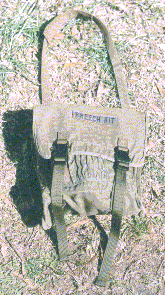 The easiest to obtain field carrying bag for your breach kit is the G.I. map case provided it be improved with quick-release buckles and straps so the Soldier can actually close the bag with something in it! This bag fits nicely into the left or right rear sponson storage rack of the BFV for quick access by dismounting infantry. The breach kit can be accessed even if the rear ramp is up, protecting the BFV from enemy fire. The breach kit will also fit on top of the dismounted Soldier's rucksack in a quick-detachable manner or slung across his back.
The easiest to obtain field carrying bag for your breach kit is the G.I. map case provided it be improved with quick-release buckles and straps so the Soldier can actually close the bag with something in it! This bag fits nicely into the left or right rear sponson storage rack of the BFV for quick access by dismounting infantry. The breach kit can be accessed even if the rear ramp is up, protecting the BFV from enemy fire. The breach kit will also fit on top of the dismounted Soldier's rucksack in a quick-detachable manner or slung across his back.
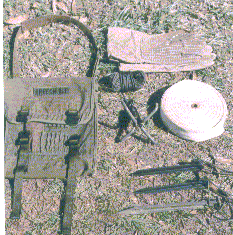 http://www.combatreform.org//mapcase.htm
http://www.combatreform.org//mapcase.htm
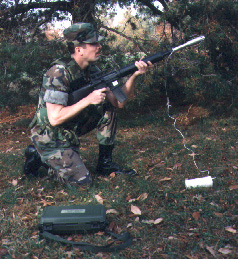
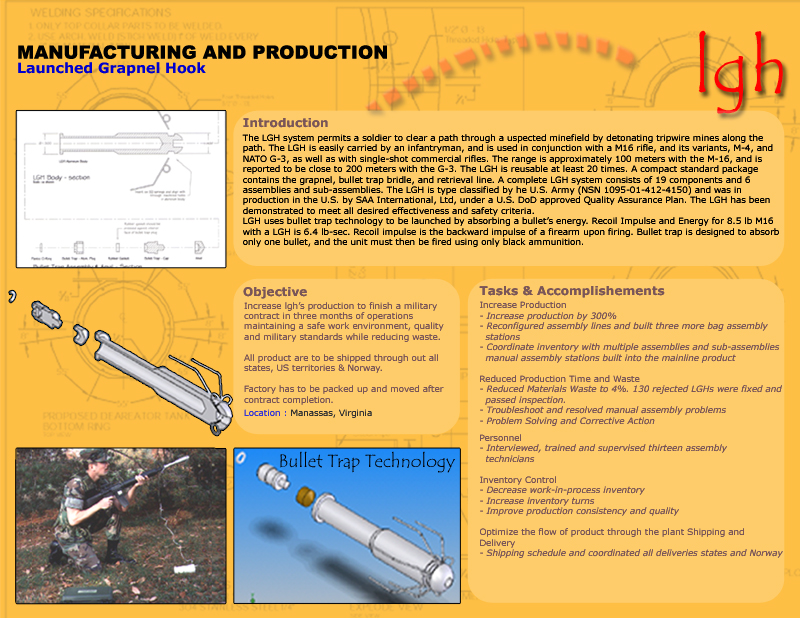
Note: Insure rifle muzzle is free of debris.
1. Inspect grapnel, bridle and retrieval line. See warnings, and additional information.
2. Place the retrieval line spool on its side on the ground with pay out end facing down range. The Plastic wrapping does not have to be removed from the spool. Pull out about five feet of line from the center of the spool.
3. Slide grapnel over muzzle until fully seated. Ensure bridle is clear of bayonet lug, front sling swivel and front sight post.
4. Move to the rear and side of retrieval line spool.

5. Assume a modified firing position with the rifle stock UNDER the firing shoulder. Grip pistol grip with the firing hand. Use the non-firing hand to grip hand guards and to adjust the angle of the weapon to between 15 and 30 degrees. See modified firing position pictures.
Note: If tree limbs, wires, or other overhead obstacles are in the line of fire, aim weapon below these and then engage target area.
6. After firing grapnel, pick up remaining line and walk back 30 meters. Using a slow retrieval, hand over hand, clear target area of trip wires.
Hearing protection required while launching grapnel.
Inspect grapnel, bridle, and retrieval line for damage before use. Check connections. Grapnels with or missing tines should be used in training only.
Insure rifle is in semi mode before launching grapnel.
Heavy Recoil -- Take care when shoulder firing.
Avoid launching with rifle butt on ground. Rifle damage may occur.
DO NOT:
ADDITIONAL INFORMATION
For max range, use standard ammunition. Blanks or other rounds will reduce range.
Pull slowly. Grapnel can skip trip wires if pulled too hard or fast. Wear Gloves if you have them.
Keep launching grapnels until no more mines detonate. Then proof lane with a final grapnel.
After NBC contamination, wash with hot, soapy water.
Grapnel can be re-used with blanks only. Recycled grapnel must be stenciled "FOR TRAINING USE ONLY - USE 5.56MM BLANK ONLY."
Inspect used grapnel before firing again with blanks. Discard if damaged. Grapnels with broken or missing tines may be re-used in training.
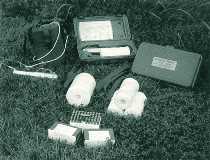
SAA International
5956 Sherry Lane., Suite 1616
Dallas, Texas 75225-8027, USA
(972) 716-4000
Fax: (214) 722-0165
www.saa-intl.com
TRAINING TIPS!
Obtain LGH Training Bag (NSN 1095-01-413-9231) with reusable line for use with recycled grapnel.


We found that its faster to use a mini-link to join the two wire loops emanating from the grapnel. This gives you a quick attach/detach capability for switching new lines after use. The mini-clip is just $2 (904 D-02 ACC Biner 3/16 BLK Ranger Joe's).
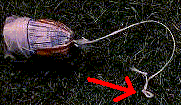
Another option is to take the disposible line and cut it in half--200 meters is for a 7.62mm weapons launch---and make up two x 100 meter spools using a paper towel cardboard roll (start the rolling with the end of the line knotted and in a slot on the end of the roll). Tie an overhand knot using a bight of line to create a figure-8 loop to clip onto the mini-link. Cover up the spools with a shortened english muffin plastic bag and twist tie, leaving out the end of the line with the figure-8 loop. You can now place the spool into your BDU trouser pocket without fear of it unraveling into a tangled mess.

When you are ready to fire with the desired blank loaded, and the grapnel over the barrel of your M16, you slide the figure-8 loop into the mini-link, undo the twist tie and bag and place on the ground for the unraveling after the launch.
MINE PROBES
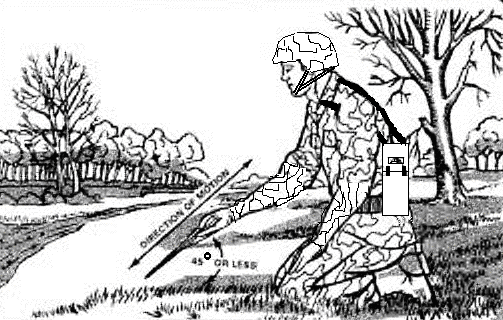
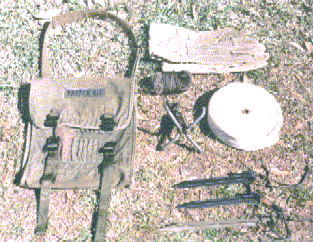
The best mine probes that are not made out of metal turn out to be plastic tent stakes.

Tent Pegs: G.I. Plastic Tent Pegs
G.I. Plastic Tent Pegs: Length: 9". Pkg of 6. Wt: 6 ozs.
Item : 6551
Amount : $2.75
These tent pegs can be ordered by clicking the following hyperlink from Ranger Joe's:
http://www.rangerjoe.com/catalog/selection.cfm?category=main&id=1548
Take a small piece of "550" para cord and make a wrist lanyard through the tent peg holes, which can also be used as a trip wire "feeler".
The tent pegs fit nicely into the map case's large pen pocket.
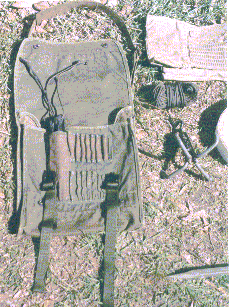
The U.S. Army's PM for countermine replies:
There are two mine probes that can be used. Recommend you give consideration to:
NSN 6665-01-432-6213
Probe, Mine 5 Piece (TA-1)
$79.40
This is a collapsible titanium mine probe that has greater durability than the plastic probes. While it is titanium, it will not disrupt magnetic signature-fuzed land mines. It comes with a compact ballistic nylon sheath. It has been recently adopted by the U.S. Army Engineer School for issue to each MOS 12B and two per AN/PSS-12 Mine Detector in Airborne, Air-mobile, and light engineer Battalions and supporting equipment Companies and Corps Battalions.
They are available from:
Mission Knives & Tools, Inc.
13805 Alton Parkway Suite D
Irvine, CA 92618
The NSN for the older Non-Metallic Mine Probe is 6665-01-371-4874.
Cost is about $10. Last time we bought it was from Federal Prison Industries. May still be available in the supply system.
Larry Nee
Chief, Countermine Division
Project Manager for Mines, Countermine and Demolitions
Phone: 703-704-1970
DSN: 654-1970
FAX: 703-704-1969
Here are Russian Soldiers using their long metallic mine probes.
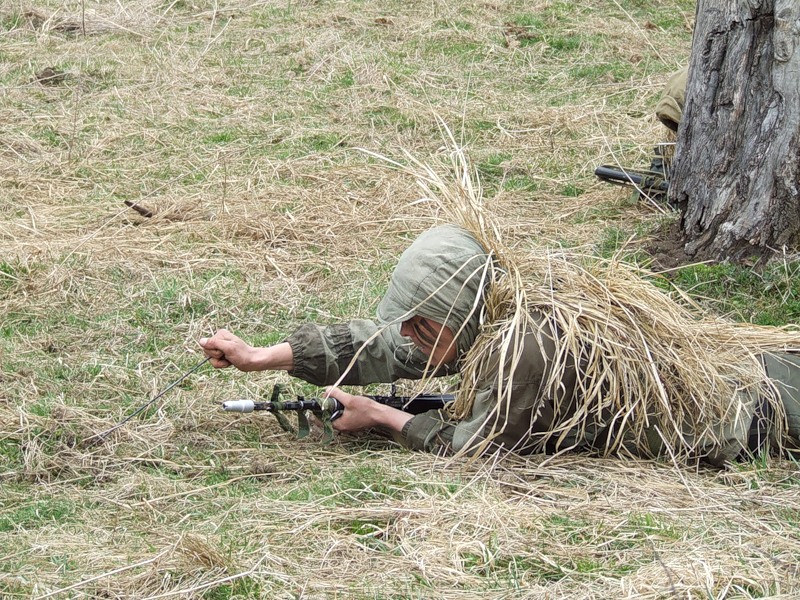

WIRE CUTTERS
A small set of wire cutters will also fit into the breach kit case, though you can also use your M9 Wire-Cutter Bayonet attached to your LBE, too. The Russians have used their AKM bayonets and scabbards for decades to cut through wire. The moronic USMC have no wire-cutting capability on their issue bayonets because their weak egos couldn't tolerate having an U.S. Army bayonet. Life is hard; it's even harder when you are STUPID!
WIRE GLOVES
Depending on the situation, you may need gloves with metal studs in them to handle barbed wire without tearing your hands up. A set of these gloves will fit into the breach kit.
ENGINEER TAPE
After you have breached a path through the enemy's mines/booby-traps you may want to mark this specific area to go through with white engineer tape.
 BETTER MARKER FLAGS
BETTER MARKER FLAGS

The marker sticks can be collected locally (before entering hostile areas) or wooden dowels cut for this purpose, carried in the breach kit bag.
The BEST solution was found by 197th Infantry Brigade Combat vet, SGT John Miller, which is inexpensive high-visibility engineer stake flags which come in packs of 100 for about $9. These are essentially stiff wires with bright orange flags that can be bent and carried inside the breach kit bag.
100 Orange Glo Stake flags
4521OG-8
Empire Level Manufacturing Company
Milwaukee, WI 53226
W229N1420 Westwood Drive
Waukesha, Wisconsin 53186
Tel: (800) 558-0722
Fax: (414) 521-3164
E-Mail empire@empirelevel.com
http://www.ospmag.com/free_advertisers/Empire_Level.htm
What's remarkable is that marker flags are an old idea dating back to the WW2 Germans! The picture below shows well-camouflaged, Russian Sappers today using marker flags to outline the path through a minefield and are cutting wire with their AKM bayonet & scabbard.
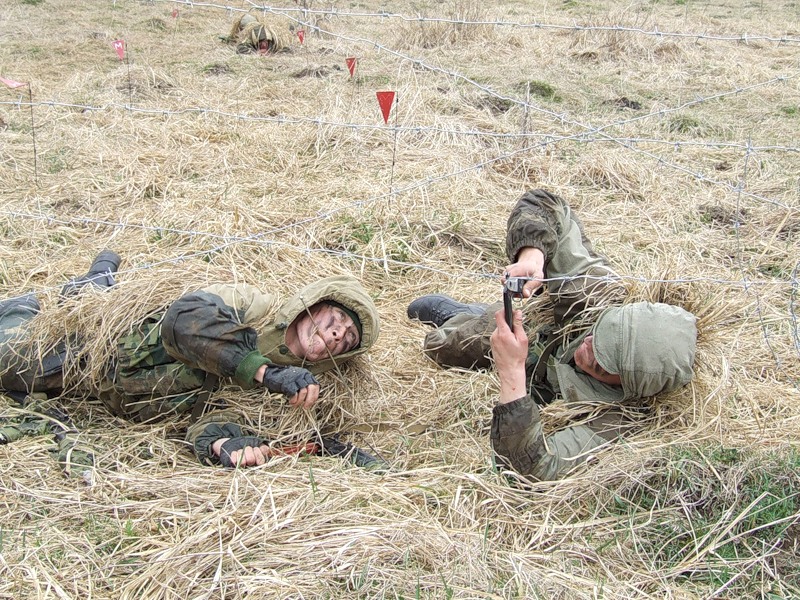
www.history.army.mil/books/wwii/milimprov/ch01.htm#I1
Military Improvisations During The Russian Campaign*CMH Pub 104-1*This publication replaces DA Pam 20-201, August 1951. Facsimile Edition, 1983, 1986 Center of Military History, United States Army, Washington, D.C.
II. Some Improvisations Used During Operation ZITADELLE
1. The Crossing of Russian Mine Fields
In preparation for Operation ZITADELLE, the German pincer attack on Kursk during the summer of 1943, XI Infantry Corps made a thorough study of the problem of crossing the extensive mine fields on the east side of the Donets. The usual procedure of sending engineer detachments to clear narrow lanes for the advance of the infantry spearheads was not considered satisfactory since the terrain offered no cover and the enemy could
Page 17 inflict heavy casualties upon engineers and infantry by concentrating his fire on these lanes. Several improvised methods for overcoming this obstacle were therefore under consideration.
The identification of the mined area was the first prerequisite since the infantry had to know its exact location prior to the crossings. This was possible because the German-held west bank commanded the Russian positions on the other side of the river. Another prerequisite was that the infantry should be able to spot the location of individual mines at close range with the naked eye. In many places small mounds or depressions, dry grass, differences in the coloring of the ground, or some other external marks facilitated the spotting.
[EDITOR: forward-looking infared aka "thermal" sights on M113 Gavin light tank RWS and hand-held models attached to weapons can do this mine detection through soil disturbance even better. Trained countermine dogs are a must, too.]
The engineers had made a number of experiments in mine detecting. In the early days of the war, the infantry sometimes crossed narrow mine fields after individual engineers lay down beside the mines as human markers, taking great care not to set them off by pressure. Although neither engineers nor infantry troops suffered losses during these early experiments, the procedure was risky and could only be applied on a small scale. It was therefore of little consequence during the later stages of the war.
A second, more promising method that fulfilled expectations consisted of marking individual mines by placing small flags or other simple markers next to the mines. This was done by engineers or infantrymen who were trained in the recognition of mines. This procedure was applied repeatedly and showed better results than the first but its large-scale use presented difficulties. The third and best method was to thoroughly instruct all infantrymen in enemy mine-laying techniques and in spotting mines by using captured enemy mine fields as training grounds. This procedure required that all infantrymen be sent to rear areas in rotation and was therefore rather time-consuming.
These requirements could be met in the case of Operation ZITADELLE since the time of the attack had been twice postponed with an ensuing delay of several weeks. The divisions committed in the narrow attack zone had moved two thirds of their combat forces to the rear where the daily training schedule featured tanks passing over foxholes and the crossing of Russian-type mine fields. This training paid off since it helped the Soldiers to overcome their fear of tanks and mines.
The beginning of the attack was so timed that the infantry would be able to detect the enemy mines without difficulty. All the mine fields were quickly crossed by spearheads which suffered practically no casualties. Only one battalion acted contrary to orders and attacked before daybreak, its commander being afraid that he might otherwise suffer heavy casualties from enemy fire
Page 18 while his men were crossing the extended open terrain in his zone. In the dark, this battalion ran into the previously uncovered mine fields and the two advance companies suffered approximately twenty casualties from mine explosions. When the battalion continued its advance by daylight it had no further losses.
After the first wave had passed through, the engineers rapidly cleared a number of lanes and marked them with colored tape so that the reserves and heavy weapons could follow. Again there were no mine casualties. Only when the supply units followed the infantry through the mine fields, were some of the men and horses blown up by the mines because they were careless or tried to bypass obstacles.
How safely anyone experienced in the detection of mines could move around in these mine fields was demonstrated during a conference on a completely mined hill, attended by about twenty unit commanders and specialists. No one had previously set foot on this hill but it was the only place which afforded a good view of the terrain. During the ascent of the hill each mine was clearly marked and no accidents occurred even though the mine field was crossed in various directions.
This improvised procedure of crossing mine fields became common practice because it avoided many casualties, resulted in quick capture of enemy positions, and was therefore very effective in the Russian theater.
CHEMLIGHTS
Another option for night operations and covert breaches is chemlights. They can be in visible light varieties or infared only so units with image intensifier night vision devices can see the IR light given off by the chemlight and not the enemy.
These fit nicely into the map case's pen holder slots.
NIGHT VISION DEVICE TAPES
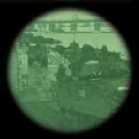
If wooden dowels are used to mark the breach lane, a small piece of "Glint" tape visible to image intensifier night vision devices (AN/PVS-4s, AN/PVS-7Bs etc.) or No-Power Thermal Tape (NPTT) visible to thermal FLIR night vision devices on Abrams/Bradley Armored Fighting Vehicle gun sights can be attached to the sticks for friendly forces to see the covert breach. The Night vision tapes will only be visible using image intensifiers or FLIR imagers on friendly AFVs like the M113A3 Gavin, M2 Bradley, M1 Abrams. Light infantry units are also getting Javelin Anti-tank Guided Missiles (ATGMs) which have a thermal (FLIR) Command Launch Unit (CLU) which can be used as a surveillance device using readily available SINCGARS radio batteries.
The Javelin CLU and other hand-held thermal viewers entering the U.S. Army inventory can utilize the NPTT/Glint tape on minefield breach markers to enable the Soldier to see where he must go safely through mines/obstacles...
GLINT TAPE
Night Vision Equipment Company
POB 266
Emmaus, PA 18049-0266
(610) 391-9101 FAX: 9220
http://www.nvec-night-vision.com/nvec/welcome.htm
NO POWER THERMAL TAPE (NPTT)
http://www.opticoat.com/IRexmple.htm
The tape is available in TAN or Green. It is available from your depot supply by NSN:
Green is NSN 9905-01-390-7410
TAN is NSN 9905-01-392-2928
Both are 3.75 inches wide by 150 feet long.
Alternatively you can order from Opticoat Associates Inc: price is $1.45/SF, or about $68/roll
POC:
Dave Smith/Opticoat Associates Inc.
10 Kidder Rd.
Chelmsford, MA 01824
PHONE: 978-250-8115
FAX: 978-250-1938
EMAIL: madavids@tiac.net
MRE HEAT PACKS
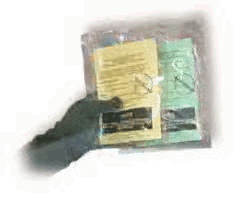
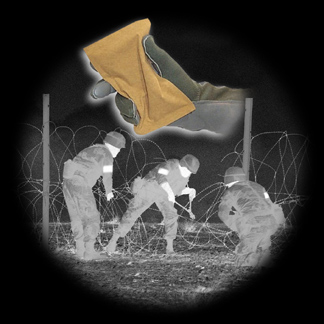
MREs now come with a water-initiated heating pack. These could be carried inside the breach kit bag and activated with a canteen of water to mark a lane for FLIR-equipped units. However, their heating time is limited. A better air-activated marker that lasts for 10 hours is available from NVEC called "Warrior Heat", Model Numbers: LD-140 (NSN: 7310-01-436-9599), SD-210 (NSN: 7310--01-434-1365), which also can be used for hypothermia medical emergencies (should be in combat lifesaver M3 bags), extreme cold weather operations.
http://www.nvec-night-vision.com/docs/hotcip.htm
 THERMAL MARKER PANELS
THERMAL MARKER PANELS
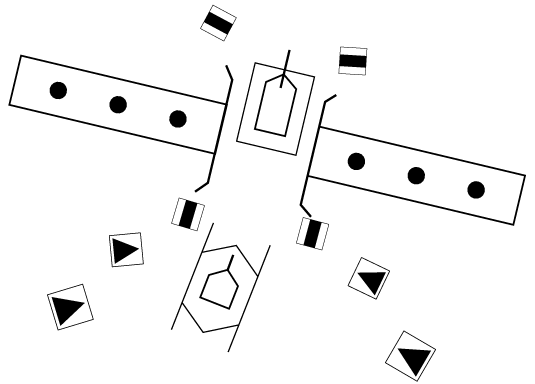
EZ Info offers a wide array of Army BRMS standard marker panels which can be used to mark a minefield breach.
These panels feature a camouflaged side that faces towards the enemy, slots for chemlights and fold up into their own storage pockets. 1-2 could fit inside the breach kit bag. EZ Info can ship most pre-paid orders within 24 Hours, and will accept Government Purchase Orders, Check, or VISA card.
All BRMS(r) panel styles have N.S.N. Numbers for your ordering convenience. Consult your National Stock Number (NSN) Catalog for purchases using this system. NB: NSN orders through the Defense General Supply Center system generally allow for 6 week delivery.
EZ Info, Inc.
801 Atchison Street
Atchison, Kansas
USA 66002
Toll Free: (800) 676-1582
Fax: (913) 367-1089
email: info@ez-info.com
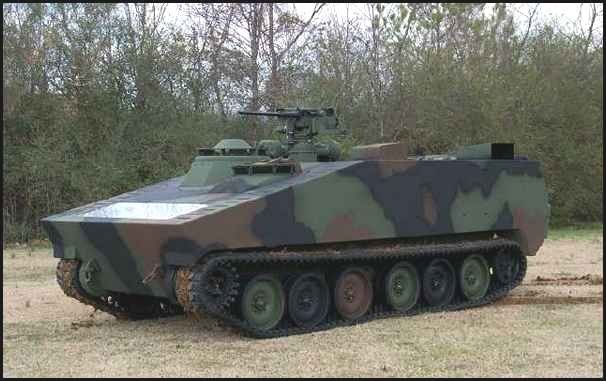
Sadly, the USMIL is a bureaucracy full of Type B personality lemmings who wait for their masters to tell them what to do. Even the alleged Type A personality light infantry narcissists (LINNIEs) sit on their ass and don't pro-actively solve problems AHEAD OF TIME with get-it and drive on (GIDO). They are Type A only if confronted in a FUBAR mess they have gotten themselves into by their fuck-it, drive on (FIDO) mentality.
Thus, the many equipment upgrades, tricks and techniques described above are not likely to be done by Type B personality lemmings against a USMIL bureaucracy that is hostile to objective reality adaptation and small unit leader empowerment--all their lying talk to the contrary notwithstanding.
It's vital that light infantry overcome the threat of High Explosive (HE) weaponry--not just fixate on the feel-good kinetic energy (KE) bullet warfare gunslinging they lust for. To get this expertise embedded into light infantry units, we propose that each Delta Weapons company--upgraded into Dragoons with M113A4 Super Gavin light tanks be assigned permanently---a Combat Engineer "Sapper Squad" to act as ENGINEER CAVALRY.
As you will notice this is EXACTLY what the German Army did in WW2 to solve the same problem.
www.history.army.mil/books/wwii/milimprov/ch01.htm#I1
Military Improvisations During The Russian Campaign *CMH Pub 104-1
*This publication replaces DA Pam 20-201, August 1951. Facsimile Edition, 1983, 1986 Center of Military History, United States Army, Washington, D.C.
5. Cavalry Brigade Model in Operation SEYDLITZFor Operation SEYDLITZ the cavalry brigade was attached to its right neighbor, the panzer division which was to advance along the Rollbahn. The brigade was to thrust through the ten mile-deep forest in one sweep and, if possible, cut the Russian supply line on the north-south highway if the main body of the panzer division was unable to make any progress. Six artillery
Page 14 batteries and one tank company with fourteen [light] tanks were attached to the brigade for the execution of this mission.
The first difficulties arose when the fourteen tanks had to be moved up to the line-of-departure through the swampy forests. Forty-eight hours before the beginning of the attack a company of engineers with power saws started to cut trees at intervals of about one yard along the edge of the forest so that the trees fell on open ground along a stretch leading through the assembly area. In a very short time and with relatively little effort a tank path was built which in effect was a corduroy road with about one-yard-wide gaps. Few branches had to be cut off the trees. For obvious reasons this road could only be used by a limited number of tanks and tracked vehicles. [EDITOR: not even feasible with wheeled trucks]
A few hours after the engineers had gone to work, the tanks started to move into their assembly area in daylight. This was possible because the wooded terrain afforded sufficient cover. The noise of the tanks was drowned by harassing fire and low-flying reconnaissance planes. All tanks arrived at their destination without incident. Experienced mine-clearing squads were assigned to each tank and ordered to ride on the tanks.
The attack started at 0300. During the artillery preparation the tanks started out together with the cavalry troops. Their movements were favored by a heavy fog which covered the river valley. They crossed most of the intervening terrain without encountering resistance. A ford across the Luchesa River which had been reconnoitered in advance was found to be adequate for the fourteen tanks.Enemy mine fields were immediately recognized by the experienced tankers and engineers and the lanes through the fields were found and widened. Suffering no losses, the tanks and cavalry suddenly rose in front of a completely surprised enemy. In one sweep the first and second lines were overrun and great confusion seized the Russians.
So all you latent Fascist Nazi lovers that are filled with joy citing how "great the Germans were" are now offered the challenge to shut-the-fuck-up (STFU) and actually EMULATE your idols in real life. They embedded Sappers into their infantry units--and had them ride on light tanks.
Imagine that.
